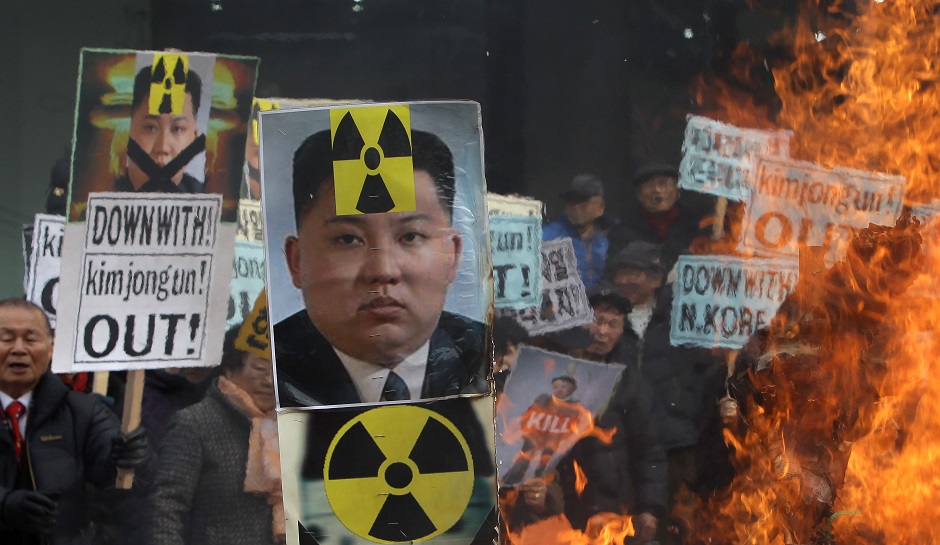
Recently, US Secretary of State Rex Tillerson and Defense Secretary James Mattis jointly wrote an article in the Wall Street Journal, signaling US intentions regarding North Korea. The two cabinet members, navigating in a tense global environment, and around an irritable and inexperienced President, declared that the US is “replacing the failed policy of strategic patience with a new policy of strategic accountability.”
From the article, this new policy can be summarized into four basic points.
First, the US will stick to the goal of achieving the complete, verifiable and irreversible denuclearization of the Korean Peninsular and a dismantling of the regime’s ballistic-missile programs. With this, the Trump administration tries to inform the world of its firm resolution in the denuclearization process. And facing a North Korea that seems to have already acquired the capability of reaching the continental United States with an ICBM, some people, both in the US and in China, have urged the US to either accept North Korea as a new nuclear power and concentrate on deterrence, or lower expectations from denuclearization to a freeze based on the condition of double suspension, i.e. to negotiate for North Korea to stop any new nuclear or missile test in exchange for an end to military exercises between the US and South Korea. The US maintains that these military exercises are reasonable and “routine” and a necessary demonstration of US defense credibility in the region, but in reality, this is just its way of asserting its predominance on the North Korean issue.
Second, the US will continue to stick to an approach of diplomatic pressure. Although there is increasing speculation that the US may resort to military means to resolve the issue, Tillerson and Mattis, reiterate what could be called “the four nos.” They assert that the US has no interest in regime change or the accelerated reunification of Korea. It will not seek an excuse to garrison US troops north of the Demilitarized Zone. They also say that the US has no desire to harm the North Korean people, who they distinguish from the hostile regime in Pyongyang.
With this, they try to send a message not only to North Korea but to China that diplomacy is still the preferred course of action, and that the US won’t engage in toppling the Kim regime, or allow the South to swallow the North through any type of “drastic unification.”
Although currently China has not shown any interest in consulting with the US on the ultimate fate of the Korean Peninsular, including the state of America’s alliance with South Korea and the likely configuration of the two Koreas, such discussions have been swirling around the strategic and scholastic circle in China. Some experts suggest that China should cooperate with the US to curb and roll back North Korea for the sake of the long-term welfare of the Peninsular. Others warn of the prospect of a unified Korea that may be pro-American and allow US influence to expand to China’s doorstep. The latter suggest that China should help sustain the status-quo, perhaps even revitalize China’s relations with North Korea and strengthen the quasi-alliance with Russia as a counterbalance. Amidst a whole range of conflicting viewpoints inside China, Tillerson and Mattis are trying to allay China’s concerns about American intentions.
Third, China is considered the most vital factor in resolving this decades-long dilemma. According to Tillerson and Mattis, China has dominant economic leverage over North Korea, with Chinese entities involved in 90% of its trade, giving Beijing “an unparalleled opportunity” to assert influence over Pyongyang. In the paper, the two cabinet members try to use both soft and hard persuasion to encourage China to pressure North Korea. They refer to China’s long-term interest in regional peace and stability. In other words, if China does not cooperate, then it will have to anticipate harm to its regional security interests. Certainly, the deployment of the THAAD missile defense system in South Korea is only the first step in this regard, and more of such moves will test China’s strategic tolerance in days to come.
Last, Tillerson and Mattis emphasize once again that military options are still on the table if diplomacy fails. Yet, they carefully define the use of force in response to any attack or any use of nuclear weapons from North Korea. This means the US still excludes the possibility of launching a preemptive strike against North Korea unless it is sure it plans to strike America first. Since Kim Jong-un threatened to fire missiles around Guam, and now seems to have dropped his threat, one can safely conclude that America’s latest warning has changed his calculus to some extent.
All in all, this policy of “strategic accountability” is not a fundamental departure from previous US strategies. Based on a “maximum pressure" approach, this new formulation tries to elevate the pressure the US wants other countries to exert upon North Korea. The main focus is still to push other countries, especially China, to sever any links with the DPRK that may enable the country to continue to boost its nuclear activities. Under the new wording, countries that do not “cooperate” may be shirking their moral obligations. However, even if all the countries, including China, were to cooperate as America wishes on North Korea, it’s still unknown if this issue can be resolved unless North Korea itself decides to change its behavior.


